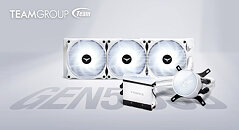
Arm Announces Next-Generation Neoverse Cores for High Performance Computing
The demand for data is insatiable, from 5G to the cloud to smart cities. As a society we want more autonomy, information to fuel our decisions and habits, and connection - to people, stories, and experiences.
To address these demands, the cloud infrastructure of tomorrow will need to handle the coming data explosion and the effective processing of evermore complex workloads … all while increasing power efficiency and minimizing carbon footprint. It's why the industry is increasingly looking to the performance, power efficiency, specialized processing and workload acceleration enabled by Arm Neoverse to redefine and transform the world's computing infrastructure.
To address these demands, the cloud infrastructure of tomorrow will need to handle the coming data explosion and the effective processing of evermore complex workloads … all while increasing power efficiency and minimizing carbon footprint. It's why the industry is increasingly looking to the performance, power efficiency, specialized processing and workload acceleration enabled by Arm Neoverse to redefine and transform the world's computing infrastructure.











































